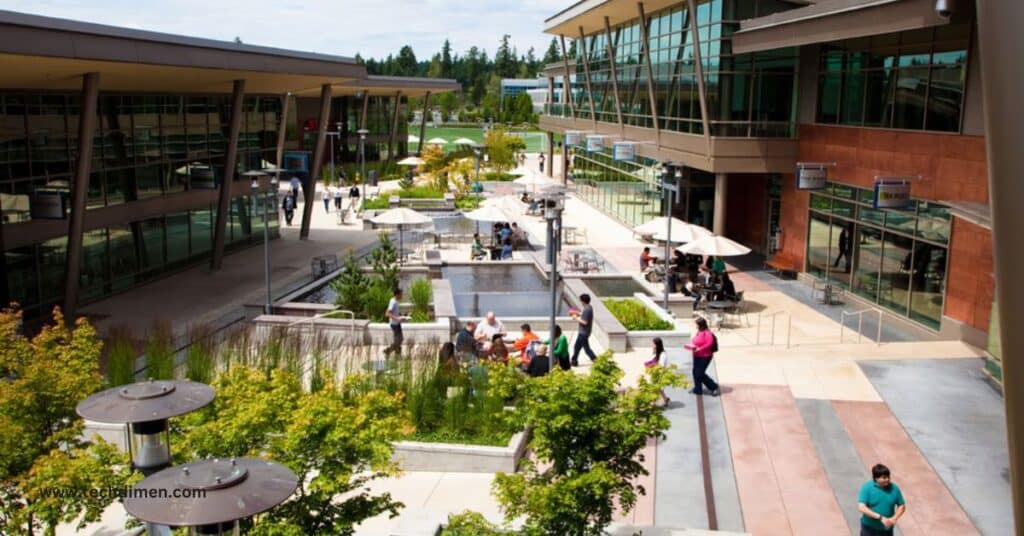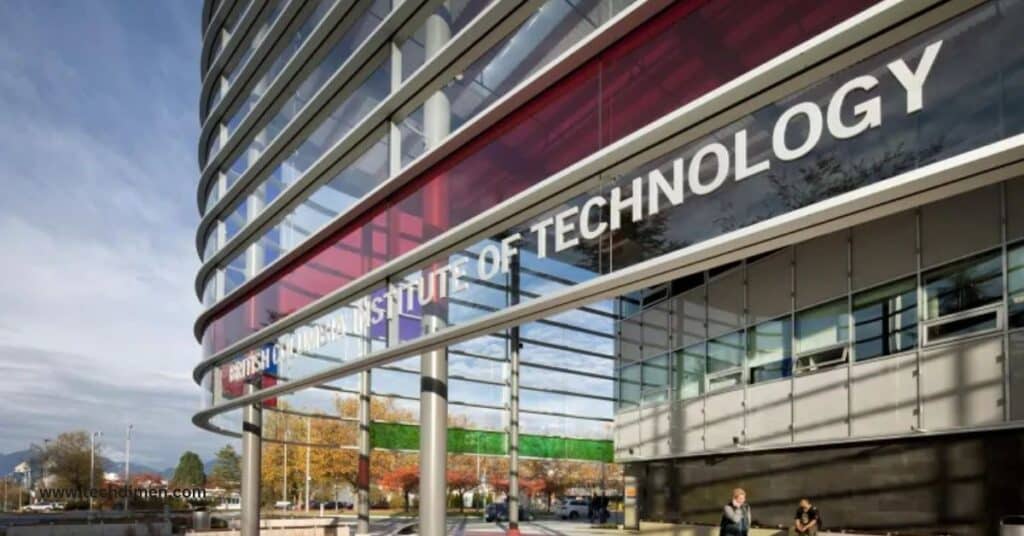The Detroit Institute of Technology was more than just a school. It was a training ground for engineers, architects, and technical experts who helped build Detroit into an industrial capital. Founded in the late 19th century and closing in the 1980s, this institution played a vital role in the rise of technical education not just in Detroit, but across Michigan. While it no longer operates, its influence continues to live on through its alumni, its contribution to the city’s industrial heritage, and the example it set for other Michigan technical institutes.
The Early Years and Historical Roots of the Detroit Institute of Technology
From Detroit Engineering School to Technical Institution
The Detroit Institute of Technology began its journey in 1891 as the Detroit Engineering School. This was a time when Detroit was rapidly growing into an industrial giant. The city needed skilled labor, and the school emerged as a response to that need. Founded by local industrialists and forward thinking educators, the institution was built with one mission in mind prepare technically trained workers for a new industrial era.
Its transformation into the Detroit Institute of Technology came during the mid 20th century as it expanded its curriculum. By then, it had already begun to gain recognition as one of the most respected Detroit engineering schools of its time. While it retained a strong engineering core, the school adapted to changing times by offering programs in architecture, applied sciences, and industrial business studies.
A Downtown Campus Built for Industry and Access

Located in the heart of downtown Detroit, the Detroit Institute of Technology campus was surrounded by the very industries it served. Students often commuted from neighborhoods where they also worked part time in local factories. This physical proximity created a strong synergy between academic theory and industrial practice, something few other institutions could offer at the time.
The design of the campus reflected its industrial roots. Classrooms were functional, labs were outfitted with equipment mirroring what students would later encounter in the field, and instructors brought the world experience into every lecture. It wasn’t an ivory tower. It was a hub for practical, job focused learning.
Academic Offerings and the Hands On Legacy of Detroit Institute of Technology
Specialized Programs Designed for the Workforce
The academic programs at Detroit Institute of Technology were shaped around real needs of employers. Students could major in mechanical engineering, learning everything from thermodynamics to machine tool operations. Electrical engineering courses prepared students to work on everything from wiring systems to power distribution. Civil engineering majors tackled structural analysis and road-building techniques, both critical for a growing city. The architecture program focused on functionality and utility designing spaces meant to last and serve, not just impress. Business technology coursework introduced students to the principles of operations management and industrial economics.
Each discipline was designed to be rigorous but highly relevant. Employers didn’t have to retrain DIT graduates they came ready to work. It wasn’t unusual for a student to design a system in class that was later implemented on a project.
Education Rooted in Practical Experience Detroit Institute of Technology

DIT’s curriculum was structured around a hands-on education model. Students weren’t just learning theories they were applying them in real time. Classroom concepts often led directly to real-world projects, either through cooperative programs or internships with local companies like Ford, General Motors, and Chrysler.
Many students balanced school with full-time jobs. Night classes were available, making the institution accessible to those already working in the trades. Faculty often doubled as consultants in their respective industries, bringing current projects into the classroom for analysis. This immersive environment helped DIT build a reputation as one of the top Detroit technical colleges for workforce ready graduates.
Research, Innovation, and Faculty Contributions
Faculty at the Detroit Institute of Technology were not just instructors. They were practitioners and innovators. Some developed new manufacturing processes that were adopted by local plants. Others published technical papers on material science, structural engineering, or energy systems. Their work helped bridge the gap between academic research and practical application.
The school’s commitment to innovation helped raise the bar across Michigan engineering institutions. Even as a relatively small school, DIT’s technical contributions influenced everything from automotive design to public infrastructure development.
Influence on Detroit’s Industrial Workforce
Fueling the Growth of the Automotive Industry Detroit Institute of Technology

One of the clearest examples of DIT’s impact can be seen in its relationship with Detroit’s automotive giants. Thousands of students graduated into roles at Ford, GM, and Chrysler, contributing to engine design, process efficiency, and plant management. These weren’t low-level roles many DIT alumni advanced to become department leads, project managers, and innovators in the field.
The connection was more than employment. DIT worked directly with these companies to shape curriculum. If a new production method was emerging, it was discussed in classrooms within months. That responsiveness made DIT graduates more valuable than those trained in slower moving academic institutions.
Contributions to City Infrastructure and Planning
Outside of automotive, Detroit Institute of Technology alumni played critical roles in designing and building the city itself. Civil engineers helped lay out new roads, bridges, and water systems. Architects drew up plans for civic buildings, schools, and hospitals. Urban planners educated at DIT helped shape zoning policies and transportation networks that still define Detroit today.
Their work extended across the region, influencing infrastructure development in cities like Flint, Grand Rapids, and Lansing. In many ways, DIT graduates were the builders of modern Michigan.
Alumni Success Stories and Professional Footprint
Many alumni went on to achieve remarkable things. Carl Thompson led powertrain design teams at General Motors. Linda Marino became one of the first female electrical systems leads in a major Michigan utility. Robert Yates founded a structural engineering firm that played a role in rebuilding Detroit’s civic infrastructure in the 1990s. Their stories are not anomalies. They reflect what made DIT college Detroit unique its ability to prepare people not just for jobs, but for leadership.
Decline, Closure, and Historical Preservation
Changing Times and Institutional Challenges

By the late 1970s, Detroit’s economic downturn began to affect institutions like DIT. As local factories downsized or shut down, internships dried up and fewer employers were investing in workforce partnerships. Enrollment dropped steadily. While the school tried to adapt, offering new programs and restructuring tuition models, the challenges proved overwhelming.
When and Why the School Closed
In 1981, the first serious financial crisis hit. By 1985, after nearly a century of operation, the Detroit Institute of Technology closed permanently. The closure marked the end of one of the most respected technical schools in Michigan and left a significant gap in the city’s educational landscape.
What Remains of the Detroit Institute of Technology Today
The original campus buildings no longer stand, replaced by new developments in downtown Detroit. However, the legacy of DIT survives. Student records were transferred to the State of Michigan and are still accessible through Michigan college archives. Several historical societies and museums include the Institute in their documentation of Detroit higher education and its connection to the city’s rise as an industrial center.
Cultural and Educational Legacy in Michigan
A Pathway for the Working Class Detroit Institute of Technology

For thousands of Detroiters, the Detroit Institute of Technology represented more than an education. It was a chance to break generational cycles of poverty. Students who had grown up working in factories were able to transition into careers as engineers, supervisors, and innovators. The school made technical education accessible without compromising on rigor.
Role in Detroit’s Industrial Boom
During Detroit’s peak industrial years, the DIT campus mirrored the city’s energy and ambition. Students and faculty were working on real problems, building real solutions. They didn’t just observe Detroit’s transformation they engineered it.
Continuing Influence on Detroit Institute of Technology Education
Though the school no longer exists, its legacy continues to influence how vocational training in Detroit is delivered today. Community colleges, trade schools, and even four year institutions have adopted the hands-on, career ready model that DIT pioneered. In this way, the Detroit Institute of Technology still exists through the methods, values, and innovations it left behind.
Detroit Institute of Technology
| Category | Details |
|---|---|
| Name | Detroit Institute of Technology |
| Type | Private Technical School |
| Location | Detroit, Michigan, USA |
| Founded | 1891 (as Detroit Engineering College) |
| Closed | Early 1980s |
| Campus | Urban Detroit |
| Peak Enrollment | Around 2,000 students |
| Main Fields | Engineering, Technology, Industrial Arts |
| Top Programs | Mechanical, Civil, Drafting, Electronics |
| Legacy | Supplied skilled engineers to Detroit’s auto industry |
| Impact | Supported Detroit’s rise as an industrial powerhouse |
| Alumni Roles | Automotive and national engineering positions |
| Reason for Closure | Decline in enrollment, financial strain, growing competition |
| Records Kept | Likely preserved in Michigan state archives |
FAQs Detroit Institute of Technology
What was the Detroit Institute of Technology?
The Detroit Institute of Technology was a private technical college in Detroit, Michigan, focused on engineering, industrial arts, and applied sciences. It trained thousands of students for careers in manufacturing, drafting, and electronics.
When was it founded and when did it close?
It was originally founded in 1891 as the Detroit Engineering College and closed in the early 1980s due to financial struggles and declining enrollment.
Where was it located?
The campus was located in urban Detroit, making it accessible to students working in or near the city’s industrial and automotive sectors.
Why did the Detroit Institute of Technology close?
Several factors contributed to its closure: decreased student enrollment, financial difficulties, and increased competition from public institutions.
What programs did it offer?
It offered programs in Mechanical Engineering, Civil Engineering, Drafting, and Electronics, with a strong emphasis on hands-on, practical training.
How many students attended the school?
At its peak, the institute enrolled approximately 2,000 students.
What impact did the school have on Detroit?
It played a crucial role in supplying skilled engineers and technicians during Detroit’s industrial boom, especially within the automotive industry.
Are any records or archives still available?
While the school itself closed, records are believed to be preserved in Michigan state archives or historical repositories.
Did the Detroit Institute of Detroit Institute of Technology have any notable alumni?
Many alumni went on to work in automotive companies, national engineering firms, and technical industries across the country, contributing significantly to industrial innovation.
Is the school connected to any current institution?
There’s no official successor, but some programs or records may have been absorbed by local Michigan colleges or universities after its closure.
Conclusion
The story of the Detroit Institute of Technology is not just one of rise and fall. It’s a narrative about how one institution shaped the workforce of a city, influenced the direction of an entire region’s infrastructure, and left behind a standard for what technical education in Detroit could look like. Though it closed in 1985, its contributions remain vivid in the buildings, systems, and careers that still carry its legacy forward.
Whether you’re looking into what happened to the Detroit Institute of Technology, exploring Detroit Institute of Technology history, or examining the evolution of technical schools in Michigan, this institution stands as a defining chapter in Detroit’s educational and industrial identity. Its influence endures, not only in the past but also in the way we train and inspire the builders of tomorrow.

Jhon AJS is a tech enthusiast and author at Tech Dimen, where he explores the latest trends in technology and TV dimensions. With a passion for simplifying complex topics, Jhon aims to make tech accessible and engaging for readers of all levels.







